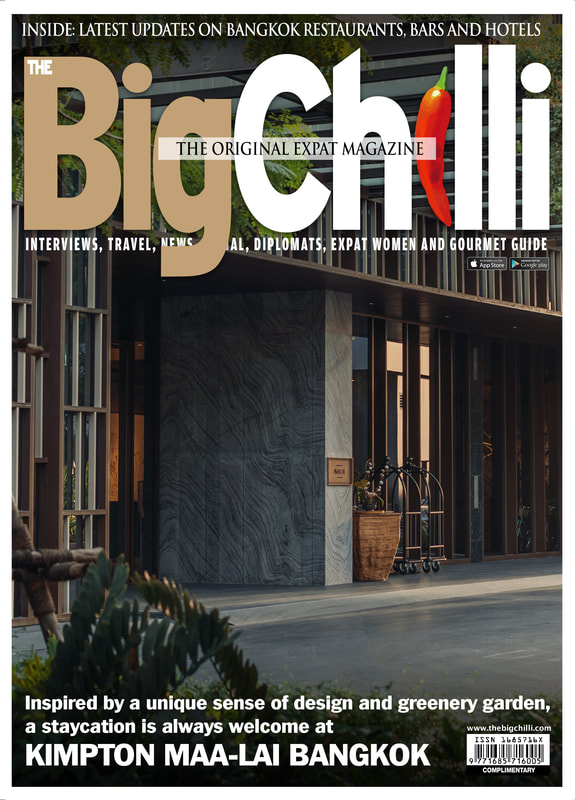A sleepy riverside town in Central Thailand, Kamphaeng Phet is popular with Bangkok tourists as a stopover on their way to Chiang Mai. But as David Armstrong explains, it’s played a crucial role in battles between warring kingdoms of ancient Siam and Burmese invaders
| KAMPHAENG PHET is a small and peaceful provincial capital on the Ping River, which flows south from Chiang Mai to help form the Chaophraya River. It is near the point where the river emerges from the hills of Tak province and spreads majestically across the soft soils of the central plains. To the west are rugged, heavily forested mountains that form a network of splendid national parks. To the east are endless fertile flatlands, where farmers grow rice, cassava, sugar, mangoes, and tiny, bright yellow fruit called kluai khai, or egg bananas. Its main attraction is a UNESCO World Heritage historical park, which contains the ruins of a fortress, fortified walls that protected a city and more than 60 ancient temples. If we go back in time this sleepy little town halfway between Bangkok and Chiang Mai was once a garrison town that protected two kingdoms, a trading centre and an important centre of Buddhism that was also contributing to the early development of Thai architecture. |
| In 1765, Kamphaeng Phet was a bustling, thriving town of perhaps 50,000 people – a substantial city in that era. Eleven years later it was in ruins and deserted – abandoned by its people. Kamphaeng Phet had been captured by a Burmese army of 20,000 men as it forced its way across Siam to form the northern arm of the pincer attack that would besiege, occupy and destroy the old capital of Ayutthaya. According to one version of Thai history, Burma’s aim in attacking Ayutthaya was to obliterate it; on the way, something similar happened to Kamphaeng Phet. The town was sacked, temples were wrecked and stripped of valuables, including statues and works of art, and men were press-ganged into the Burmese army. All records were destroyed. Now, 250 years later, there is at least one large temple in the historical park that has been given a modern name (Wat Kru Si Hong) because no one knows what it was originally called. The name of Kamphaeng Phet appears in the sketchy written record in 1357, as a substantial city in the Sukhothai kingdom (which lasted from 1238 until 1438). It was developed as a fortified town to protect the city of Sukhothai from Burma and also from a rising rival kingdom in Ayutthaya. The name Kamphaeng Phet means diamond wall, a reference to the strength of its fortifications. The original city walls were earthen but later walls built out of laterite were added. Laterite is a soft, clay-like soil, rich in iron oxide that hardens when exposed to the air. The old earthen wall buttressed the stone wall. The wall was, and is, surrounded by a moat. In modern Kamphaeng Phet, a five-kilometer road, with bicycle track, runs along the inside of the wall, which is trapezoid in shape. The area contained temples, a palace, houses, shops and army barracks. |
According to ancient chronicles two of Thailand’s most important religious icons – Phra Phuttha Sihing and the Emerald Buddha – were housed in Kamphaeng Phet in the late 14th or early 15th centuries, in the main temple in the centre of the walled city. The temple is now known as Wat Phra Kaeo, as a visiting king (either Rama IV or Rama VI, depending on which account you read) renamed the central temple area in honour of the Emerald Buddha. Wat Phra Kaeo is the biggest temple in the walled city. It is close to the old palace area and had no monastery: it was used solely for religious ceremonies.
A short walk away is Wat Phra That, an attractive building that once had a colonnade lined with Buddha statues. It has a bell-shaped chedi in the Sukhothai style but it is placed in a series of receding tiers, making it taller than usual – a touch of the local architectural style. Outside the walled city is an area now known as the temples in the forest, where the ruins of some 40 ancient structures rest on the side of a hill. They were built over the course of more than two centuries. No one knows exactly when: the temples are listed as belonging to the 14th, 15th and 16th centuries. At the top of the hill is the crowning glory, Wat Chang Rop. It is adorned with elephants that look like they are supporting the structure, a popular motif in the Sukhothai era. The main chedi structure is about 35m, or 17 elephants, along with each side – 68 elephants in all.
Elephants aside, the historical park no longer has many examples of ancient religious art. The Kamphaeng Phet National Museum, however, has quite a few examples of ancient art. They include the imposing Siva statue, strangely enough, a Hindu image but the only one in the town – and a bronze standing Buddha, discovered during excavation work at Wat Kru Si Hong (the unknown temple) – still beautiful, even though it is damaged.
Over the 200 or so years between the mid-16th century and the fall of Ayutthaya in 1766, Burma and Siam fought each other 11 times – on average, a war every 20 years. Kamphaeng Phet built its fortress and strengthened the defences of the walled city, with the addition of watchtowers of a more modern design. And the city bought the cannon. As a trading city, Kamphaeng Phet exported deerskins. The main market was Japan, where the skins were used to make leather bucklers that were part of the samurai uniform.
The Dutch had a monopoly on the trade and one Dutch trader estimated that in the 17th century 150,000 deerskins were exported from Siam every year. Kamphaeng Phet used some of the money earned to buy cannon from the Dutch. For decades, Siam and Burma had been fighting, on and off, for control of Burma’s southern coast and its trade. In the mid-18th century, a new Burmese dynasty aimed to cement its power over the coastal areas and spread its influence eastward. It attacked in 1759, achieving the first of its aims.
In 1765, Burma decided to take out Ayutthaya, its rival and sent three armies on the march: a northern army of 20,000 men and two southern armies totalling 30,000. Combined, they made up the biggest Burmese invasion force in 200 years. The defenders outnumbered them but the Burmese were better prepared. Burma took a risk: the army marched in the rainy season, hoping to reach Ayutthaya with several months of the dry season remaining. Starting on August 23, 1765, they slogged their way south, taking out Tak and then Kamphaeng Phet by November and the end of the wet season.
The Burmese came down the river to attack Kamphaeng Phet. The northern wall of the fortress and the two northern watchtowers, facing the river, are no more. A large slice of the southern city wall, again closest to the river, is also missing. By December, the Burmese had taken Sukhothai and Phitsanulok (which had been regarded as an unofficial northern capital). On January 20, 1766, they reached the outer areas of Ayutthaya and the siege began. After 14 months Burma captured, plundered and sacked the capital, reducing one of the world’s grand cities to ashes.
Burma, however, was forced to withdraw its forces before the end of the year, largely because it faced a war to its north with China. Burma was to attack Siam again in 1775 and 1776 but the Siamese forces were more effective and defeated their old enemy. A description in the Kamphaeng Phet National Museum says Burma attacked the city in each of those years but both assaults were easily repelled. The note goes on to say, however, that Kamphaeng Phet had been used as a battlefield many times.
“As a result,” it says, “the city was destroyed by ongoing wars, resulting in the abandonment of the city.” Kamphaeng Phet was not alone in being destroyed. As fighting continued over the years, Chiang Mai was abandoned at one point, as was Phitsanulok and other northern cities. To the south, Nakhon Si Thammarat suffered the same fate
In today’s Kamphaeng Phet, the historical park is a beautiful, peaceful parkland, with big trees offering ample shade for visitors. It is not as grand as Sukhothai and Si Satchanalai; it shows the effects of a harder, grittier history. And it has a message: it is a living museum, a monument to the best and the worst in human endeavours, of devotion to a spiritual life, to higher values that strive for the good and reject the bad, of creativity and ingenuity. But also of the futility of war.
A short walk away is Wat Phra That, an attractive building that once had a colonnade lined with Buddha statues. It has a bell-shaped chedi in the Sukhothai style but it is placed in a series of receding tiers, making it taller than usual – a touch of the local architectural style. Outside the walled city is an area now known as the temples in the forest, where the ruins of some 40 ancient structures rest on the side of a hill. They were built over the course of more than two centuries. No one knows exactly when: the temples are listed as belonging to the 14th, 15th and 16th centuries. At the top of the hill is the crowning glory, Wat Chang Rop. It is adorned with elephants that look like they are supporting the structure, a popular motif in the Sukhothai era. The main chedi structure is about 35m, or 17 elephants, along with each side – 68 elephants in all.
Elephants aside, the historical park no longer has many examples of ancient religious art. The Kamphaeng Phet National Museum, however, has quite a few examples of ancient art. They include the imposing Siva statue, strangely enough, a Hindu image but the only one in the town – and a bronze standing Buddha, discovered during excavation work at Wat Kru Si Hong (the unknown temple) – still beautiful, even though it is damaged.
Over the 200 or so years between the mid-16th century and the fall of Ayutthaya in 1766, Burma and Siam fought each other 11 times – on average, a war every 20 years. Kamphaeng Phet built its fortress and strengthened the defences of the walled city, with the addition of watchtowers of a more modern design. And the city bought the cannon. As a trading city, Kamphaeng Phet exported deerskins. The main market was Japan, where the skins were used to make leather bucklers that were part of the samurai uniform.
The Dutch had a monopoly on the trade and one Dutch trader estimated that in the 17th century 150,000 deerskins were exported from Siam every year. Kamphaeng Phet used some of the money earned to buy cannon from the Dutch. For decades, Siam and Burma had been fighting, on and off, for control of Burma’s southern coast and its trade. In the mid-18th century, a new Burmese dynasty aimed to cement its power over the coastal areas and spread its influence eastward. It attacked in 1759, achieving the first of its aims.
In 1765, Burma decided to take out Ayutthaya, its rival and sent three armies on the march: a northern army of 20,000 men and two southern armies totalling 30,000. Combined, they made up the biggest Burmese invasion force in 200 years. The defenders outnumbered them but the Burmese were better prepared. Burma took a risk: the army marched in the rainy season, hoping to reach Ayutthaya with several months of the dry season remaining. Starting on August 23, 1765, they slogged their way south, taking out Tak and then Kamphaeng Phet by November and the end of the wet season.
The Burmese came down the river to attack Kamphaeng Phet. The northern wall of the fortress and the two northern watchtowers, facing the river, are no more. A large slice of the southern city wall, again closest to the river, is also missing. By December, the Burmese had taken Sukhothai and Phitsanulok (which had been regarded as an unofficial northern capital). On January 20, 1766, they reached the outer areas of Ayutthaya and the siege began. After 14 months Burma captured, plundered and sacked the capital, reducing one of the world’s grand cities to ashes.
Burma, however, was forced to withdraw its forces before the end of the year, largely because it faced a war to its north with China. Burma was to attack Siam again in 1775 and 1776 but the Siamese forces were more effective and defeated their old enemy. A description in the Kamphaeng Phet National Museum says Burma attacked the city in each of those years but both assaults were easily repelled. The note goes on to say, however, that Kamphaeng Phet had been used as a battlefield many times.
“As a result,” it says, “the city was destroyed by ongoing wars, resulting in the abandonment of the city.” Kamphaeng Phet was not alone in being destroyed. As fighting continued over the years, Chiang Mai was abandoned at one point, as was Phitsanulok and other northern cities. To the south, Nakhon Si Thammarat suffered the same fate
In today’s Kamphaeng Phet, the historical park is a beautiful, peaceful parkland, with big trees offering ample shade for visitors. It is not as grand as Sukhothai and Si Satchanalai; it shows the effects of a harder, grittier history. And it has a message: it is a living museum, a monument to the best and the worst in human endeavours, of devotion to a spiritual life, to higher values that strive for the good and reject the bad, of creativity and ingenuity. But also of the futility of war.

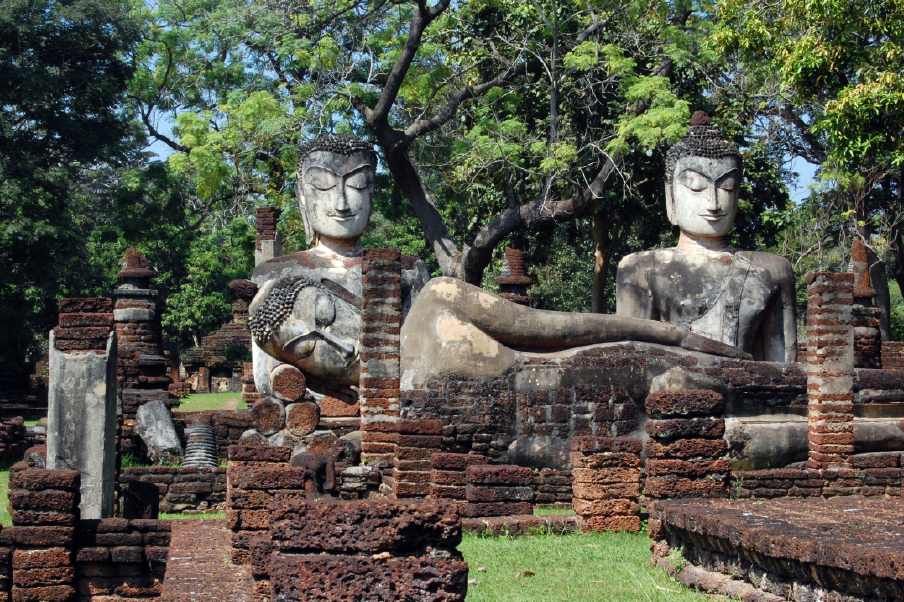
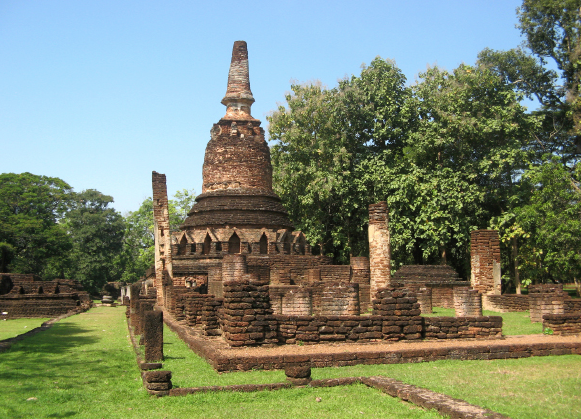
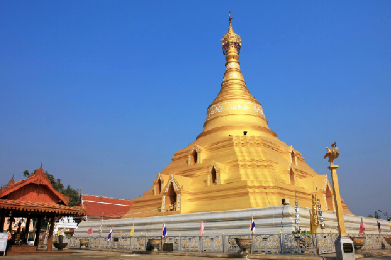
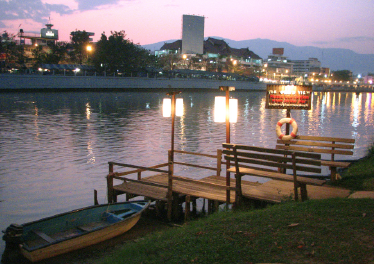
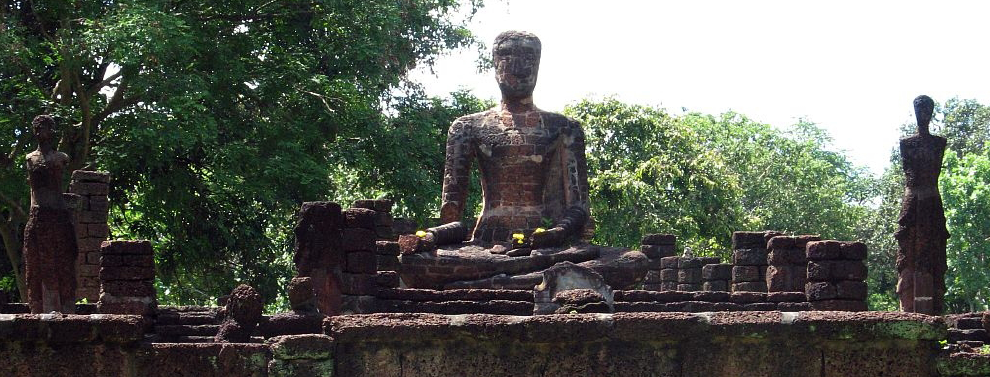
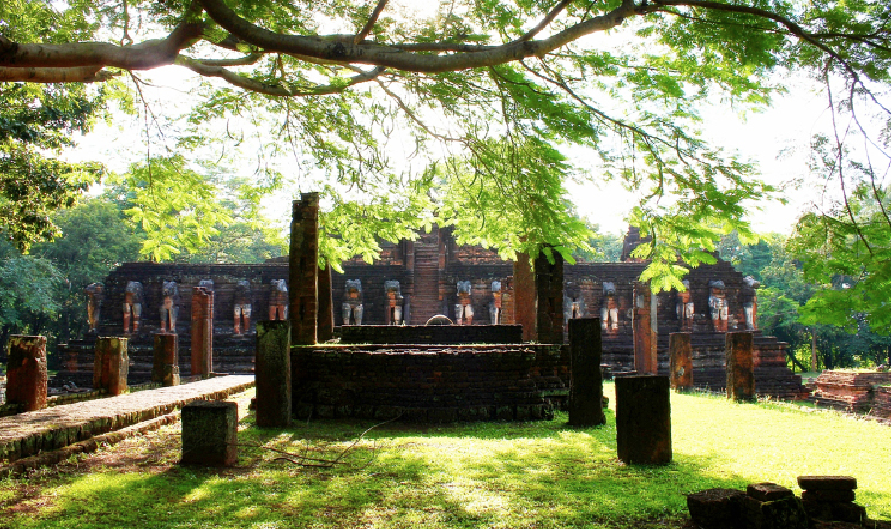
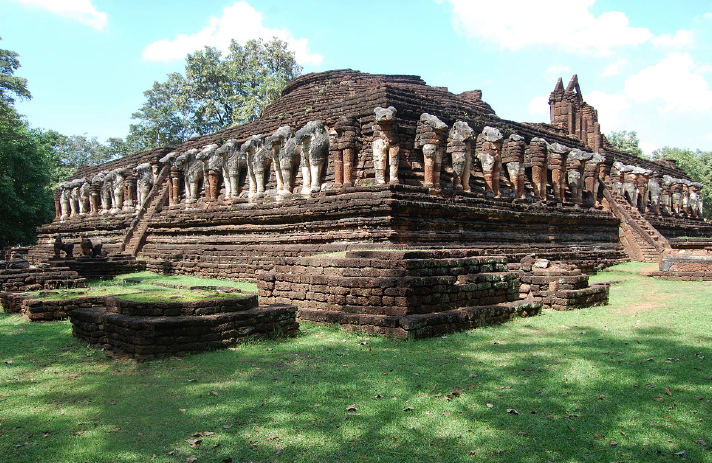
 RSS Feed
RSS Feed





